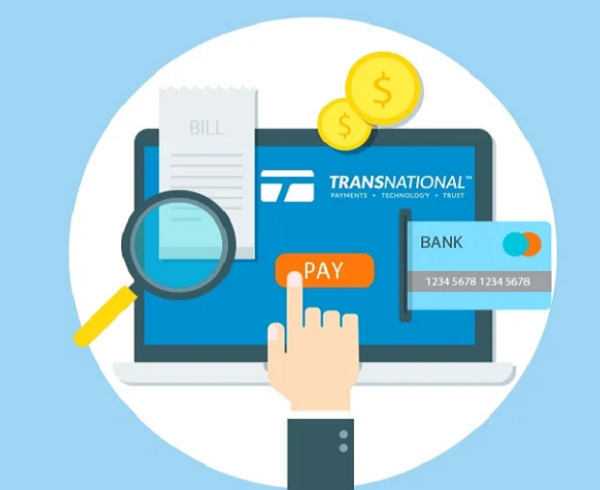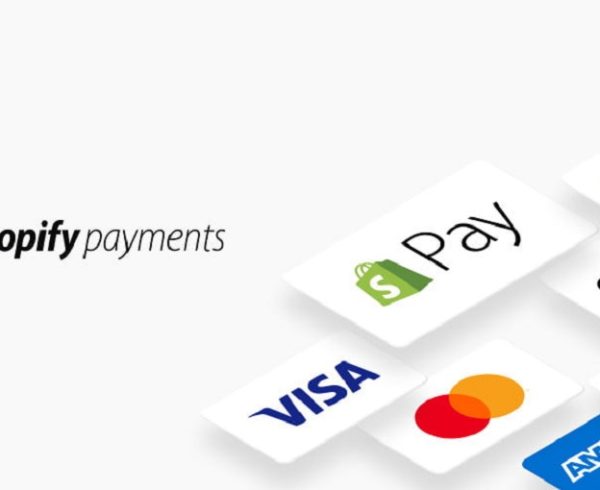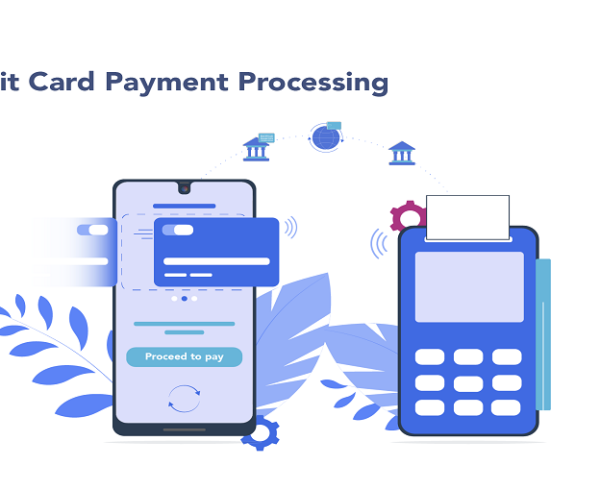In the world of e-commerce, choosing the right platform is crucial to maximizing profits and ensuring smooth operations. Shopify, one of the most popular e-commerce platforms, provides a robust solution for businesses of all sizes. However, like any service, it comes with costs, and one of the key areas that can affect your bottom line is Shopify payments fees. These fees cover everything from credit card processing to transaction charges, and they can have a significant impact on your profit margins if not carefully managed.
Understanding how Shopify payment fees work and how they are calculated is essential for any business owner looking to get the most out of the platform. Whether it’s the Shopify payments fees per month, Shopify credit card processing fees, or the potential hidden costs like the unknown Shopify charge, all these factors contribute to your overall expenses. Additionally, Shopify offers multiple plans, each with different pricing structures and features, which can further influence how much you end up paying.
For many businesses, the integration of Shopify’s built-in payment gateway Shopify Payments is a convenient and cost-effective way to manage transactions. However, if you choose to use a third-party payment gateway, you may encounter additional Shopify third-party transaction fees, which can cut into your profits even further. To help with budgeting, Shopify offers tools like the Shopify transaction fees calculator, which can give merchants a clearer idea of how much they will pay in fees on a monthly basis.
This article delves into the details of Shopify payment fees, breaking down the different costs associated with using the platform, including credit card processing fees, third-party transaction fees, and monthly charges. By understanding these costs, e-commerce merchants can make informed decisions on how to optimize their Shopify store and ensure they are maximizing their profit margins. From exploring various Shopify pricing plans to using tools like the Shopify credit card fees report
The Basics of Shopify Payments Fees
When using Shopify, understanding the fee structure is crucial to managing your e-commerce store’s expenses. The primary fee components that Shopify merchants need to be aware of are:
1. Shopify Payments Fees:
These include credit card processing fees, transaction fees, and monthly fees depending on your chosen plan.
2. Shopify Credit Card Processing Fees:
These are the fees charged by Shopify when customers make payments via credit or debit cards.
3. Third-Party Payment Gateway Fees:
If you choose to use a different payment gateway other than Shopify Payments, additional fees apply.
4. Shopify Pricing Plans:
Shopify offers different pricing tiers, each with its own set of features and associated fees.
5. Shopify Transaction Fees Calculator:
This tool helps merchants estimate their monthly fees based on sales volume.
Shopify Pricing Plans and Monthly Fees
Shopify offers several pricing plans, each with its own fee structure. These are:
1. Basic Shopify Plan: $39 per month
2. Shopify Plan: $105 per month
3. Advanced Shopify Plan: $399 per month
Each plan has its own set of features, including staff accounts, report capabilities, and additional tools for scaling businesses. However, as you move up the tiers, your transaction fees decrease, which can be particularly beneficial for high-volume stores.
For instance, merchants on the Basic Shopify Plan are charged a 2.9% + 30¢ per transaction for online credit card purchases, while those on the Advanced Shopify Plan only pay 2.4% + 30¢. Though the Shopify payments fees per month increase with each plan, the reduced transaction fees can help offset these costs, especially for larger businesses.
Shopify Credit Card Processing Fees
One of the main components of Shopify payment fees is credit card processing. Whether you’re using Shopify Payments or a third-party provider, every transaction comes with a processing fee. When using Shopify Payments, you pay a flat fee per transaction based on your Shopify plan:
– Basic Shopify Plan: 2.9% + 30¢ per transaction
– Shopify Plan: 2.6% + 30¢ per transaction
– Advanced Shopify Plan: 2.4% + 30¢ per transaction
Credit card processing fees cover the cost of moving money from your customer’s bank to your business account, and they are a critical part of your e-commerce expenses. High processing fees can significantly cut into your profit margins, so optimizing the plan that best fits your sales volume can be a smart strategy.
In addition to these credit card fees, Shopify offers a Shopify credit card fees report, where merchants can track how much they have been charged for processing payments over a specific period. This report is helpful for analyzing your payment expenses and making necessary adjustments to your plan or pricing strategy.
Shopify Third-Party Transaction Fees
If you decide not to use Shopify Payments and instead choose a third-party payment gateway (such as PayPal or Stripe), you’ll incur additional transaction fees on top of the processing fees charged by the gateway. These Shopify third-party transaction fees are:
– Basic Shopify Plan: 2% per transaction
– Shopify Plan: 1% per transaction
– Advanced Shopify Plan: 0.5% per transaction
These fees can add up quickly, especially for stores with high sales volumes. Therefore, many merchants prefer Shopify Payments, as it eliminates the additional third-party transaction fees. However, some businesses opt for third-party gateways for specific reasons, such as better international support or lower fees for certain types of transactions.
Using a Shopify transaction fees calculator can help you estimate the total cost of using a third-party gateway versus Shopify Payments. By inputting your store’s average order value, number of transactions, and other variables, you can get a clearer picture of how fees will affect your profit margins.
Shopify Payment Gateway: Choosing the Best Option
Shopify Payments is the default payment gateway for Shopify stores, and it offers several advantages:
1. No Additional Transaction Fees:
As long as you use Shopify Payments, you won’t be charged the additional transaction fees that apply to third-party gateways.
2. Integrated System:
Shopify Payments integrates seamlessly with your store, providing a streamlined checkout experience for customers.
3. Multi-Currency Support:
Shopify Payments allows you to accept payments in different currencies, which is useful for global e-commerce businesses.
However, if your business has specific needs, such as better support for certain payment methods or lower processing fees in specific regions, you may still want to explore third-party options. Each business should evaluate its unique needs before choosing a payment gateway.
FAQs
What is the Shopify Payments fee?
Shopify Payments fees are transaction and credit card processing charges for merchants using Shopify’s built-in payment gateway. Basic charges 2.9% + 30¢ per transaction, while Advanced plans charge 2.6% + 30¢. Third-party payment gateways incur additional fees based on plan.
How do I avoid transaction fees on Shopify?
Shopify Payments, the platform’s built-in payment gateway, eliminates third-party transaction fees, reducing costs. Using this over external gateways like PayPal or Stripe and upgrading to higher-tier plans also reduces processing fees.
Is Shopify Payments worth it?
Shopify Payments integrates with Shopify, offering competitive credit card processing fees, simplified processing, multiple currency support, and fraud detection. It’s cost-effective for small to mid-sized businesses, but value depends on transaction volume and business needs.
Is Shopify Payments better than Stripe?
Shopify Payments integrates seamlessly with the Shopify platform, eliminating transaction fees and providing a streamlined checkout experience. However, Stripe offers advanced customization and features, making it a better choice for businesses with greater flexibility or not exclusively using Shopify.
Is it better to use Shopify payments or PayPal?
Shopify Payments is preferred over PayPal for Shopify stores due to its seamless integration, lower transaction fees, and elimination of the extra 2% fee. Offering both options enhances customer convenience and trust.
Impact on Profit Margins: Calculating the Real Cost
The fees you pay on Shopify directly impact your profit margins. Even a small percentage taken off each sale can accumulate quickly, especially for high-volume businesses. To get an accurate sense of how much Shopify payment fees are affecting your profits, it’s essential to calculate the full cost of each transaction.
Start by determining the total cost of processing a payment. This includes the Shopify credit card processing fees plus any Shopify third-party transaction fees (if applicable). For example, if you’re on the Basic Shopify Plan and using Shopify Payments, the fee for a $100 sale would be:
- Credit card processing fee: 2.9% + 30¢ = $3.20
- No additional transaction fee (if using Shopify Payments)
If you’re using a third-party payment gateway, you would also add the third-party transaction fee, which could be as high as 2%, resulting in a total fee of $5.20.
Now, calculate your profit margin by subtracting the total fees from your revenue. For example, if your profit margin is 30% and you’re paying $5.20 in fees on a $100 sale, your net profit is significantly reduced.
Using tools like the Shopify transaction fees calculator can help merchants monitor how fees are impacting their overall profit margins and determine if they need to switch plans or adjust their payment strategy.
The Unknown Shopify Charge: What to Watch Out For
One common concern among Shopify merchants is the appearance of an unknown Shopify charge on their bill. These charges can result from a variety of sources, such as:
1. App Fees:
If you’re using paid apps to enhance your store’s functionality, the charges for these apps will appear on your Shopify invoice.
2. Shipping Fees:
Some merchants who use Shopify’s integrated shipping services may see additional charges for shipping label purchases.
3. Subscription Adjustments:
If you switch Shopify plans mid-billing cycle, there may be prorated charges or credits applied to your account.
If you notice an unknown charge on your invoice, Shopify’s customer support team can help you investigate the source and resolve any discrepancies.
Shopify Payments Fees: Optimizing Your Shopify Store for Profitability
To maximize profit margins while using Shopify, here are some actionable tips:
1. Choose the Right Shopify Plan:
Based on your sales volume, selecting the plan with the most favorable transaction fees can make a significant difference in your profits.
2. Use Shopify Payments:
Avoid third-party transaction fees by sticking with Shopify’s integrated payment system.
3. Track Your Fees:
Use the Shopify credit card fees report and transaction fees calculator to keep a close eye on your payment expenses.
4. Consider App Costs:
Be mindful of any additional app fees that may be adding to your monthly expenses.
International Transaction Fees and Currency Conversion
If you run an international business, you need to consider the cost of accepting payments in different currencies. Shopify Payments allows merchants to accept payments in multiple currencies, which can enhance the customer experience. Nevertheless, there are costs related to currency conversion:
1. Currency Conversion Fees:
Shopify Payments charges a fee for converting currencies, which typically ranges from 1.5% to 2%. If you’re selling internationally, these fees can add up quickly and reduce your profit margins.
2. Multi-Currency Pricing Strategy:
To mitigate the impact of currency conversion fees, consider offering prices in local currencies or adjusting your pricing strategy to accommodate for potential losses from currency conversion.
Monitoring your international sales performance and optimizing your multi-currency strategy can help reduce the impact of these fees on your profits.
Shopify Payments Fees: Discounts for High-Volume Merchants
Shopify offers discounted credit card processing fees for businesses that have higher sales volumes. If you’re processing a large number of transactions per month, it may be worthwhile to explore Shopify Plus, a premium enterprise plan that offers lower transaction fees:
1. Lower Processing Fees:
Shopify Plus merchants enjoy even lower credit card fees compared to the Advanced Shopify plan, making it a great option for businesses with high sales volumes.
2. Custom Pricing:
Shopify Plus offers custom pricing based on your business needs and sales volume, which can result in further fee reductions.
If you’re scaling your business, upgrading to Shopify Plus could help you lower transaction costs and improve your profit margins.
Shopify Fraud Prevention and Chargeback Fees
Another key factor that can affect your profit margins is the cost of handling fraudulent transactions. Shopify Payments offers built-in fraud prevention tools, but merchants still face the risk of chargebacks:
1. Chargeback Fees: If a customer disputes a transaction, Shopify charges a fee (typically $15 per chargeback) to handle the process. While this fee may seem small, repeated chargebacks can significantly impact your profitability.
2. Fraud Analysis Tools: Shopify provides basic fraud detection tools for merchants using Shopify Payments, but you may want to invest in additional fraud prevention apps to minimize chargebacks and protect your profits.
3. Chargeback Dispute Success Rate: Improving your response to chargeback disputes can increase your success rate in winning disputes, reducing the overall financial burden. It’s essential to have a clear refund and chargeback policy in place to minimize losses from fraud-related issues and protect your bottom line.
Leveraging Shopify Reports for Fee Analysis
Shopify provides merchants with a variety of reports, including the Shopify credit card fees report to track and analyze payments. These reports are essential for understanding how Shopify payment fees affect your e-commerce store’s financial health:
1. Shopify Finance Reports:
These reports allow you to see a breakdown of your fees, including credit card processing fees, third-party payment gateway fees, and Shopify Payments fees. This helps you get a clear understanding of your overall fee burden.
2. Profit Margin Analysis:
By using Shopify’s built-in reporting tools, you can track how your profit margins are affected by different fees and adjust your pricing strategy accordingly.
3. Custom Reports:
For merchants on the Advanced Shopify plan or Shopify Plus, you can create custom reports to track specific metrics related to your payment fees and transaction costs, giving you deeper insights into where you can optimize for better profitability.
Regularly reviewing these reports allows you to identify trends and areas where fees may be eating into your profits, helping you take corrective actions to improve your margins.
Tax Implications of Shopify Payments Fees
Shopify payment fees can be tax-deductible depending on your location. In some jurisdictions, processing fees can be deducted from your taxable income, reducing your tax burden. Speak with a tax expert to optimize these deductions. Track Shopify payment fees throughout the year to include them in your tax filings. Use Shopify’s reports and integration with accounting software to stay organized and compliant.
Bundling Costs and Fees Into Your Pricing Strategy
E-commerce businesses often incorporate Shopify payments fees into their pricing strategy to protect profit margins. This can be done through the cost-plus pricing model, which includes all transaction and payment costs into the product price. Dynamic pricing tools can adjust prices based on currency and fees for international businesses, ensuring consistent profit margins across markets. Additionally, shipping and handling fees can be adjusted to account for transaction fees, especially for high-ticket items or products in regions with higher processing fees.
Seasonal and Promotional Considerations
During peak seasons, such as Black Friday or Cyber Monday, transaction volumes typically increase, and so do Shopify payment fees. Preparing for these fluctuations is essential:
1. Increased Sales, Increased Fees: While higher sales volumes during promotional periods boost revenue, the higher number of transactions also results in more Shopify payment fees. Be sure to account for this when planning promotions or discounts.
2. Discounted Transaction Fees: If you’re expecting a significant surge in sales, consider upgrading to a higher Shopify plan temporarily. While the monthly fee might be higher, the reduced transaction fees could lead to substantial savings over the course of a high-volume period. Having a well-planned strategy for managing fees during peak periods will help you avoid unexpected profit losses and maximize returns on your promotional campaigns.
To sum up, understanding and managing Shopify payment fees is essential for maintaining healthy profit margins in your e-commerce business. Whether it’s the Shopify payments fees per month, Shopify credit card processing fees, or additional costs from third-party gateways, these expenses can quickly add up. By carefully selecting the right Shopify plan, using Shopify Payments, and utilizing tools like the Shopify transaction fees calculator, merchants can optimize their stores for profitability and ensure they are getting the most out of their Shopify experience.







